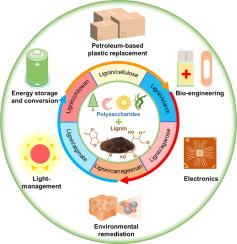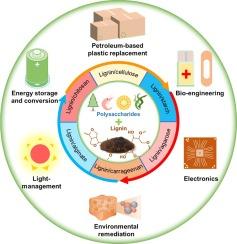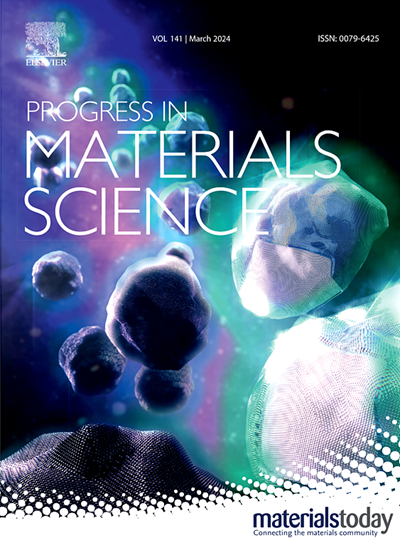Lignin/polysaccharide composite: A nature-made match toward multifunctional bio-based materials
IF 33.6
1区 材料科学
Q1 MATERIALS SCIENCE, MULTIDISCIPLINARY
引用次数: 0
Abstract
During the evolutionary development of plants, lignin emerged, engaging in a remarkable synergy with polysaccharides. This union enhanced the adaptability of plants to harsh environments through a complementary relationship. Lignin addresses the inherent limitations of polysaccharides, providing hydrophobicity, ultraviolet (UV) resistance, and environmental stability. Building on this natural paradigm, we explore the development of artificial lignin/polysaccharide composites (LPCs), encompassing a range of combinations such as lignin/cellulose, lignin/chitosan, lignin/starch, lignin/alginate, lignin/agarose, and lignin/carrageen composites. This review provides a comprehensive examination of lignin’s origins, understanding, properties, and the advancements and challenges faced by polysaccharides. We detail the fabrication of LPCs from lignin and natural polysaccharides, discussing their construction strategies, properties, and potential applications. Furthermore, we highlight existing challenges and future opportunities for the improved utilization of LPCs. Our aim is to catalyze the effective use of lignin and natural polysaccharides, offering fresh insights for the innovation of next-regeneration LPCs.


木质素/多糖复合材料:与自然相匹配的多功能生物基材料
在植物的进化发展过程中,木质素与多糖产生了显著的协同作用。这种结合通过互补关系增强了植物对恶劣环境的适应能力。木质素解决了多糖固有的局限性,包括疏水性、抗紫外线(UV)性和环境稳定性。在这一自然范例的基础上,我们探索了人工木质素/多糖复合材料(LPC)的开发,包括一系列组合,如木质素/纤维素、木质素/壳聚糖、木质素/淀粉、木质素/海藻酸、木质素/琼脂糖和木质素/卡拉胶复合材料。本综述全面探讨了木质素的起源、认识、特性以及多糖所取得的进步和面临的挑战。我们详细介绍了利用木质素和天然多糖制造 LPC 的情况,讨论了其制造策略、特性和潜在应用。此外,我们还强调了改进 LPCs 利用的现有挑战和未来机遇。我们的目标是促进木质素和天然多糖的有效利用,为下一代 LPC 的创新提供新的见解。
本文章由计算机程序翻译,如有差异,请以英文原文为准。
求助全文
约1分钟内获得全文
求助全文
来源期刊

Progress in Materials Science
工程技术-材料科学:综合
CiteScore
59.60
自引率
0.80%
发文量
101
审稿时长
11.4 months
期刊介绍:
Progress in Materials Science is a journal that publishes authoritative and critical reviews of recent advances in the science of materials. The focus of the journal is on the fundamental aspects of materials science, particularly those concerning microstructure and nanostructure and their relationship to properties. Emphasis is also placed on the thermodynamics, kinetics, mechanisms, and modeling of processes within materials, as well as the understanding of material properties in engineering and other applications.
The journal welcomes reviews from authors who are active leaders in the field of materials science and have a strong scientific track record. Materials of interest include metallic, ceramic, polymeric, biological, medical, and composite materials in all forms.
Manuscripts submitted to Progress in Materials Science are generally longer than those found in other research journals. While the focus is on invited reviews, interested authors may submit a proposal for consideration. Non-invited manuscripts are required to be preceded by the submission of a proposal. Authors publishing in Progress in Materials Science have the option to publish their research via subscription or open access. Open access publication requires the author or research funder to meet a publication fee (APC).
Abstracting and indexing services for Progress in Materials Science include Current Contents, Science Citation Index Expanded, Materials Science Citation Index, Chemical Abstracts, Engineering Index, INSPEC, and Scopus.
 求助内容:
求助内容: 应助结果提醒方式:
应助结果提醒方式:


